| Name | Jensen Capsule Polisher |
| Lead Time | Lead time advised within 48 hours of order placement. |
| Competitor | ;OP0902113;OP0902-113;OP2071;OP2071001;OP2071-001;K74920;K7-4920;K74921;K7-4921;601146;60-1146;6011-46;OP0902111;OP0902-111;601147;60-1147;6011-47;6011-46_6011-47; |
| Specialty | Ophthalmology-Cannulas |
| Material Finish | Stainless Steel |
| Grade | Premium Operating Room |
| Units of Measurement | Each |
| Manufacturer | Tool Tectra |
| Sterility | Non-Sterile |
| Usage | Reusable |
Jensen Capsule Polisher
tip flattened, 19-gauge Jensen Capsule Polisher is a useful tool in cataract procedures. The polisher is used to remove opacity on the posterior capsule leading to improved surgical outcome. The diamond dusted tip is delicate enough to prevent rupture of the capsule. Two sizes are available with the polisher depending on surgical preference.
SKU:
TT-SI-9244
Category: Cannulas
Description
Reviews (0)
Be the first to review “Jensen Capsule Polisher” Cancel reply
Shipping & Delivery
Related products
Scheie Anterior Chamber Cannula
SKU:
TT-SI-4543
blunt, 27-gauge, 3/4" (2.0 cm)Scheie Anterior Chamber Cannula is a frequently used tool in cataract extraction procedures. The small gauge cannula is nimble enough to fit into a small limbal incision accessing the anterior chamber. It may be used to aspirate fluid within the anterior chamber exposing the lens capsule.
Healon Injection Cannula
SKU:
TT-SI-5449
flat tip, 21-gauge, overall length excluding hub 1-1/4" (3.0 cm) Gimbel Irrigating Cannula is a useful tool during cataract and IOL implantation procedures. The cannula may be used to perfuse fluid for easier manipulation of the IOL or easier access to debride nuclear fragments. The ultra-small gauge facilitates entrance into the lens capsule.
Binkhorst Irrigating Cannula
SKU:
TT-SI-2639
Bailey Lacrimal Cannula
SKU:
TT-SI-6792
reinforced shaft, 23-gauge, 1/2" (1.5 cm) Bailey Cannula is an extremely useful tool in treating tear duct obstructions. The cannula may be used to investigate blockage of lacrimal gland damage or more frequently, obstruction of the nasolacrimal duct. The cannula features a reinforced shaft to prevent bending and kinking during the procedure, while the shorter working length affords the surgeon more control.
Gills-Welsh Cannula
SKU:
TT-SI-6883
25-gauge, angled Gills-Welsh Cannula is a commonly used tool in cataract and various other ophthalmologic procedures. The small gauge of the cannula may be used to aspirate fluid in the anterior chamber of the eye following a limbal incision. Four different angles are available with the cannula depending on surgical preference.
McIntyre Lacrimal Probe Cannula
SKU:
TT-SI-1684
2" (5.0 cm), 23-gauge McIntyre Lacrimal Probe Cannula is an extremely useful tool in treating tear duct obstructions. The probe may be used to investigate blockage of lacrimal gland damage or more frequently, obstruction of the nasolacrimal duct. The slender profile of the cannula allows access to the small entrances of the duct. Both straight and curved models are available depending on surgical preference.
Lacrimal Cannula – Reinforced Shaft
SKU:
TT-SI-9225
1.2" (3.1 cm) shaft w/ 2.0 cm reinforced, 23-gauge Lacrimal Cannula is an extremely useful tool in treating tear duct obstructions. The cannula may be used to investigate blockage of lacrimal gland damage or more frequently, obstruction of the nasolacrimal duct. The cannula features a reinforced shaft to prevent bending and kinking during the procedure.
Lacrimal Cannula
SKU:
TT-SI-3896
1.2" (3.1 cm) shaft w/ 2.0 cm reinforced, 23-gauge Lacrimal Cannula is an extremely useful tool in treating tear duct obstructions. The cannula may be used to investigate blockage of lacrimal gland damage or more frequently, obstruction of the nasolacrimal duct. The slender profile of the cannula allows access to the small entrances of the duct. Two different working lengths are available with the cannula depending on surgical preference.


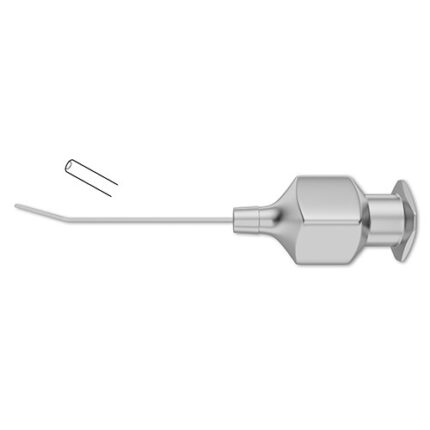
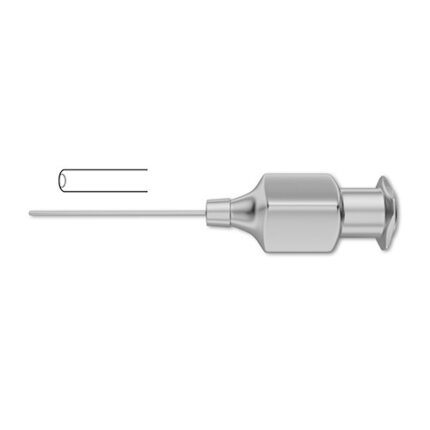

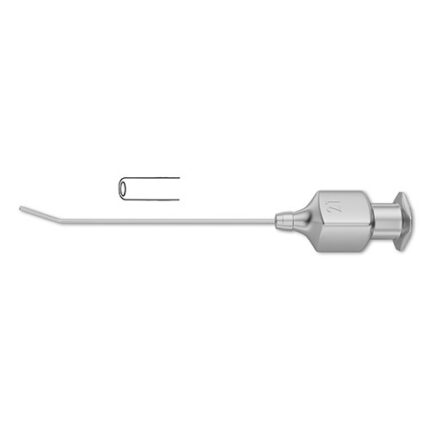
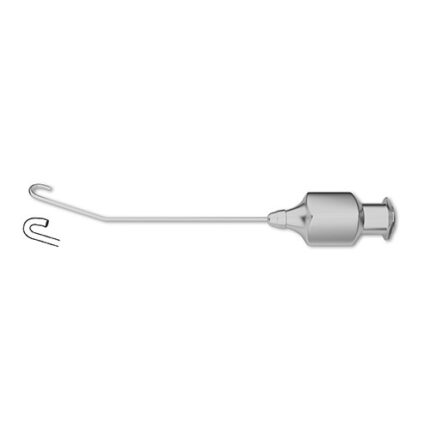
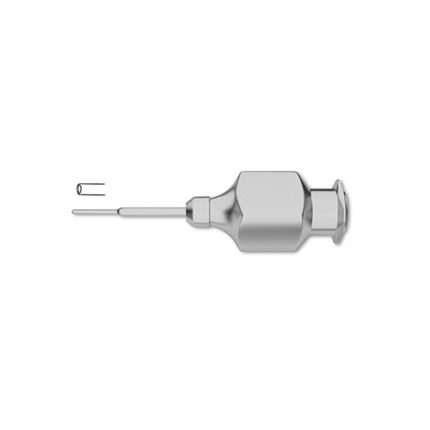
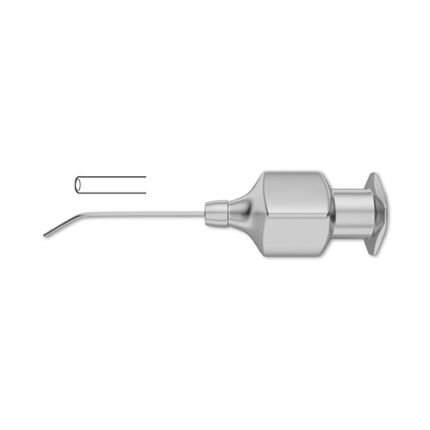

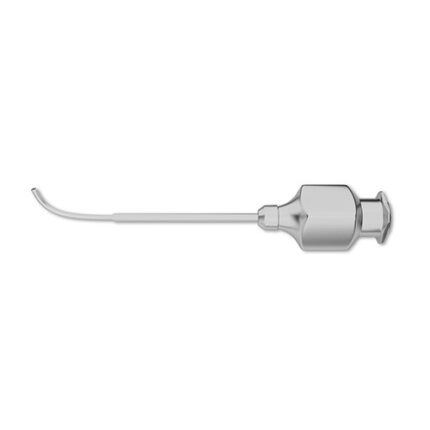


Reviews
There are no reviews yet.